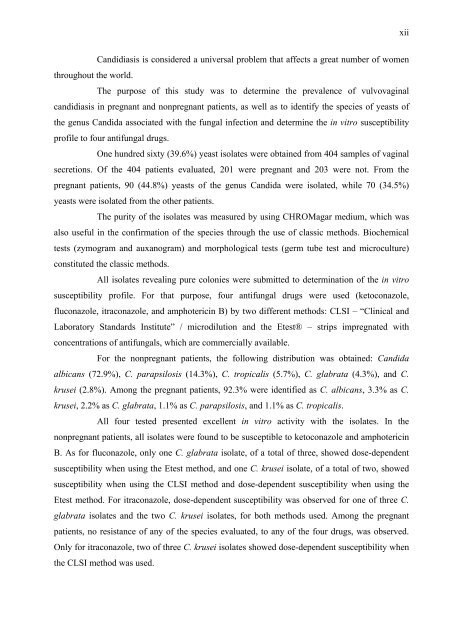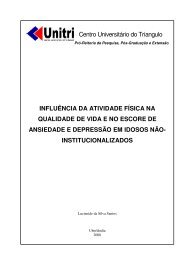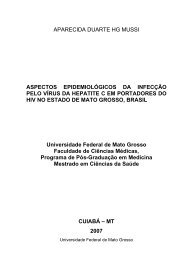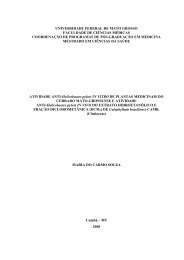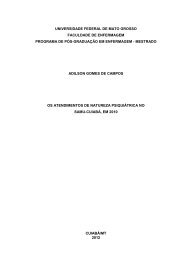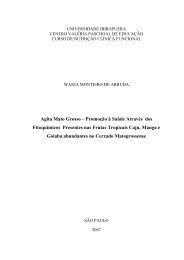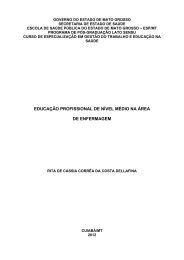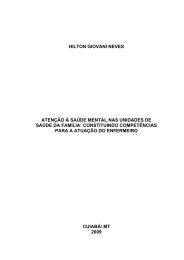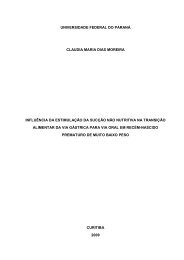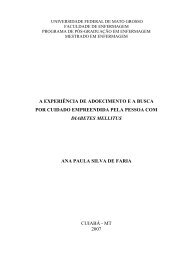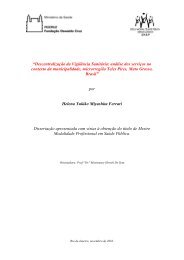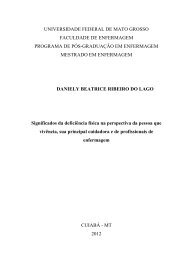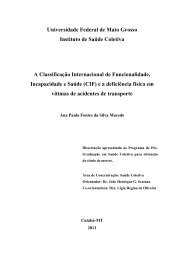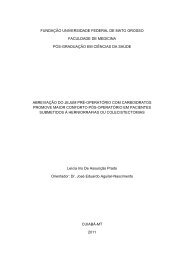Luciana Basili Dias CandidÃase vulvovaginal em pacientes gestantes
Luciana Basili Dias CandidÃase vulvovaginal em pacientes gestantes
Luciana Basili Dias CandidÃase vulvovaginal em pacientes gestantes
You also want an ePaper? Increase the reach of your titles
YUMPU automatically turns print PDFs into web optimized ePapers that Google loves.
xii<br />
Candidiasis is considered a universal probl<strong>em</strong> that affects a great number of women<br />
throughout the world.<br />
The purpose of this study was to determine the prevalence of <strong>vulvovaginal</strong><br />
candidiasis in pregnant and nonpregnant patients, as well as to identify the species of yeasts of<br />
the genus Candida associated with the fungal infection and determine the in vitro susceptibility<br />
profile to four antifungal drugs.<br />
One hundred sixty (39.6%) yeast isolates were obtained from 404 samples of vaginal<br />
secretions. Of the 404 patients evaluated, 201 were pregnant and 203 were not. From the<br />
pregnant patients, 90 (44.8%) yeasts of the genus Candida were isolated, while 70 (34.5%)<br />
yeasts were isolated from the other patients.<br />
The purity of the isolates was measured by using CHROMagar medium, which was<br />
also useful in the confirmation of the species through the use of classic methods. Bioch<strong>em</strong>ical<br />
tests (zymogram and auxanogram) and morphological tests (germ tube test and microculture)<br />
constituted the classic methods.<br />
All isolates revealing pure colonies were submitted to determination of the in vitro<br />
susceptibility profile. For that purpose, four antifungal drugs were used (ketoconazole,<br />
fluconazole, itraconazole, and amphotericin B) by two different methods: CLSI – “Clinical and<br />
Laboratory Standards Institute” / microdilution and the Etest® – strips impregnated with<br />
concentrations of antifungals, which are commercially available.<br />
For the nonpregnant patients, the following distribution was obtained: Candida<br />
albicans (72.9%), C. parapsilosis (14.3%), C. tropicalis (5.7%), C. glabrata (4.3%), and C.<br />
krusei (2.8%). Among the pregnant patients, 92.3% were identified as C. albicans, 3.3% as C.<br />
krusei, 2.2% as C. glabrata, 1.1% as C. parapsilosis, and 1.1% as C. tropicalis.<br />
All four tested presented excellent in vitro activity with the isolates. In the<br />
nonpregnant patients, all isolates were found to be susceptible to ketoconazole and amphotericin<br />
B. As for fluconazole, only one C. glabrata isolate, of a total of three, showed dose-dependent<br />
susceptibility when using the Etest method, and one C. krusei isolate, of a total of two, showed<br />
susceptibility when using the CLSI method and dose-dependent susceptibility when using the<br />
Etest method. For itraconazole, dose-dependent susceptibility was observed for one of three C.<br />
glabrata isolates and the two C. krusei isolates, for both methods used. Among the pregnant<br />
patients, no resistance of any of the species evaluated, to any of the four drugs, was observed.<br />
Only for itraconazole, two of three C. krusei isolates showed dose-dependent susceptibility when<br />
the CLSI method was used.


